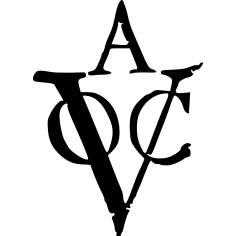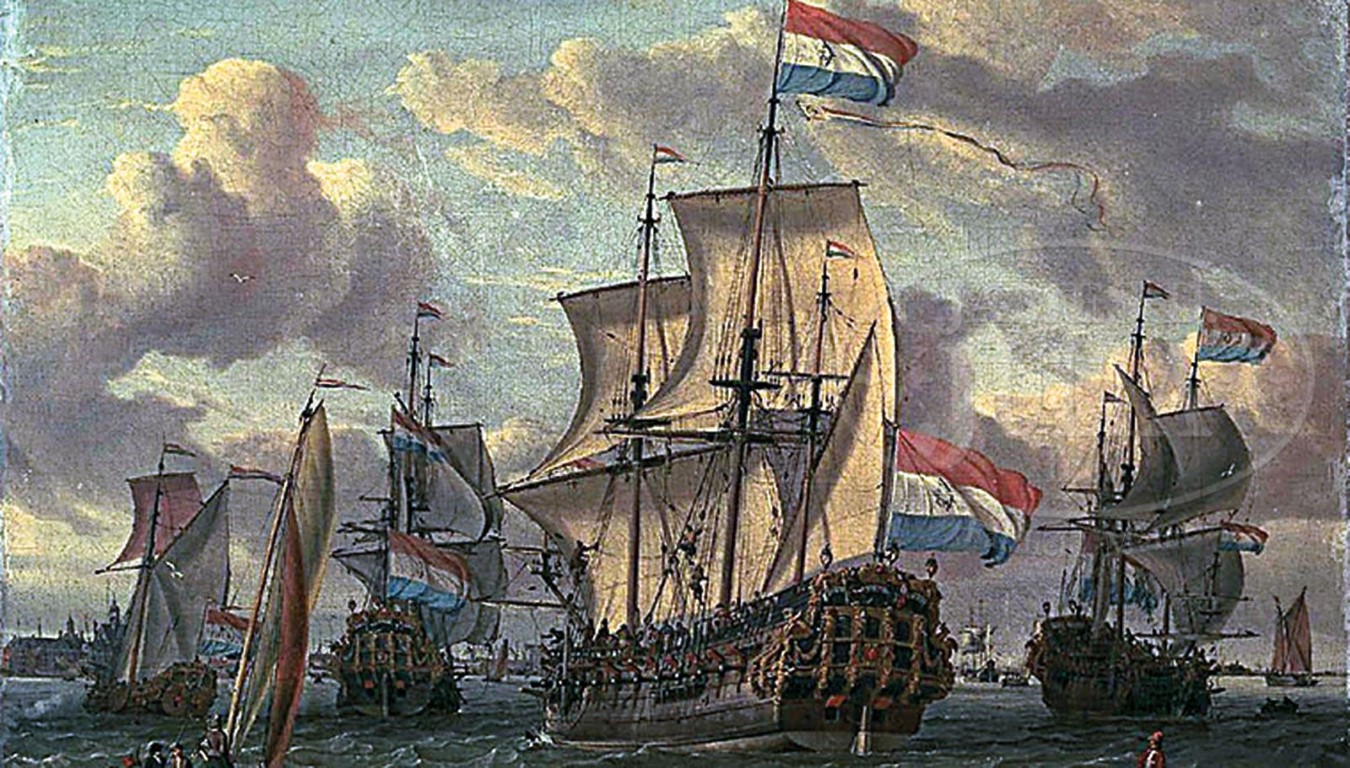Rise and Fall Of Dutch East India Company
Dutch East India Company formally dissolved (31 December), and its debts and possessions taken over by the Batavian Republic

VOC
Dutch East India Company formally dissolved (31 December), and its debts and possessions taken over by the Batavian Republic

1568
Abortive revolt in the Netherlands crushed by Alva. Execution of Egmont and Hoorn at Brussels (June)
1572
The sea-beggars’ capture of Den Brid (April) followed by a new surge of revolt in Holland and Zedand. Massacre of St. Bartholomew (August)
1579
Union of Utrecht (January) between the seven northern and self-styled United Provinces of Holland, Zeeland, Utrecht, Guelderland, Overijssel, Groningen and Friesland. The regions subsequently captured formed the ‘Lands of the States-General' or 'The Generality’
1580
Union of the Crowns of Spain and Portugal in the person of Philip II
1581
Prince William I of Orange, Stadtholder of Holland, Zeeland and Utrecht, and the States-General of the Seven Provinces, formally renounce their allegiance to Philip II of Spain
1584
Assassination of William I (July). Rise of the Muslim empire of Mataram in central Java begins, 1582-1613
1585
Parma’s capture of Antwerp followed by accelerated emigration of Calvinists and capital from the southern Provinces to the northern. Leicester’s abortive governor-generalship in the Seven Provinces. First Iberian embargo on Dutch shipping (May 1585)
1588
Prince Maurice appointed Stadtholder. Anglo-Dutch defeat of the Spanish Armada
1590-1600
Great expansion of Dutch seaborne trade to the Mediterranean, West Africa and Indonesia
1600
Foundation of the English East India Company. The first Dutch ship reaches Japan. Unification of Japan under the de facto rule of the Tokugawa Shogunate after the battle of Sekigahara, 1600-1863
1602
Foundation of the Dutch East India Company
1605
Dutch capture Amboina and drive the Portuguese from the Moluccas
1606
Dutch fleet blockades the Tagus. A Spanish expedition from the Philippines recaptures part of the Moluccas. Unsuccefully Dutch attacks on Mozambique and Malacca
1607
Heemskerk destroys a Spanish fleet off Gibraltar
1609
Inauguration of the Ten Year Truce with Spain, Dutch factory at Hirado in Japan
1610-12
Dutch settlements founded in Guiana and the Amazon region, these last beeing subsequently destroyed by the Portuguese. Fort Mouree founded on the Guinea Coast (1612)
1614
Dutch fur-traders active on the Hudson River
1618-19
Synod of Dordrecht. Execution of Oldenbarneveldt. Outbreak of the Thirty Years War. Dutch found Batavia on the ruins of Jakarta. Anglo-Dutch rivalry in the East Indies temporarily changed into an Alliance in 1619-23. Mataram reaches the height of its power under Sultan Agung (1613-45). Achin reaches the height of its power under Sultan Iskander Muda (1615-36). Islamization of Macassar.
1621
Expiration of the Twelve Years Truce. Establishment of the Dutch West India Company
1624-5
Dutch take and lose Bahia. Spinola captures Breda. New Amsterdam founded on Manhattan Island. Dutch repulsed at Puerto Rico and Elmina. Death of Maurice, who is succeeded by his brother, Frederick Henry, as Stadtholder
1628-9
Piet Heyn captures the Silver Fleet (September 1628). Dutch capture Hertogenbosch, Spaniards unsuccessfully besiege Bergen-op-Zoom. Mataram unsuccessfully besieges Batavia. Death of Jan Pietersz Coen
1630
Dutch begin the conquest of Pernambuco (NE. Brazil)
1637
Frederick Henry recaptures Breda. John Maurice completes conquest of Pernambuco. Van Diemen makes an alliance with Raja Sinha of Kandy against the Portuguese in Ceylon
1638-9
Dutch capture Elmina in Guinea and begin conquest of coastal Ceylon 1630. 1639 M. H. Tromp destroys a Spanish Armada in The Downs (21 October)
1640
Catalonia and Portugal revolt from Spain, which subdues the former in 1656 And recognizes the independence of the latter in 1668. Dutch defeat a Portuguese Armada off Pernambuco
1641
Dutch capture Malacca (January), the Maranhao and Luanda (August) from the Portuguese, with whom they also conclude a Ten Year Truce at The Hague (June). The Dutch are now the only Europeans allowed in Japan (Deshima at Nagasaki) till 1853
1644-5
Dutch naval expeditions force the passage of the Sound and protect Dutch trade in the Baltic. John Maurice’s departure from Pernambuco, followed by rebellion in NE. Brazil against the Dutch. Manchus inaugurate their conquest of China
1647
Death of Frederick Henry, who is succeeded by his son, William II, as Stadtholder
1648
Spain recognizes Dutch independence by the Treaty of Munster (January). Portuguese recapture Luanda and Benguela (August)
1650-1
Premature death of William II after an abortive coup-de-main against Amsterdam. Abolition of the office of Stadtholder (save in Friesland and Groningen), and inauguration of the -period of the so-called 'True Freedom'. Passage of the English Navigation Act discriminating against Dutch seaborne Trade
1652-4
First Anglo-Dutch War, ending in a decisive Dutch defeat in the North Sea and regional Dutch victories in the East Indies and the Mediterranean. Van Riebeeck founds the settlement at Cape Town-Johan de Witt becomes Grand Pensionary of the Province of Holland and the effective leader of the Republic until 1672. Portuguese expel the Dutch from NE. Brazil. Arnold de Vlaming completes the conquest of the Amboina group (1650-6)
1658-9
Dutch intervene in the Baltic and relieve the pressure of the Swedish attack on Denmark. Dutch complete the conquest of coastal Ceylon (1654-8)
1661-3
Dutch make peace with Portugal and complete the conquest of Malabar from the Portuguese. Coxinga captures Formosa from the Dutch, and the Spaniards evacuate the Moluccas. First Dutch attack on Macassar
1664
English take some Dutch forts on the Gold Coast and the North American Colony of New Netherlands in time of peace
1665-7
Second Anglo-Dutch war, culminating in the Dutch raid on the Medway and the Treaty of Breda. Final subjugation of Macassar by Speelman and Aru Palakka
1668
Triple alliance between Dutch Republic, England and Sweden
1672-4
Third Anglo-Dutch War and invasion of the Republic by the French. Murder of the brothers De Witt (August 1672) and re-establishment of the Stadtholdership in favour of Prince William III. Revolt of Trunajaya inaugurates the decline of Mataram which recognizes Dutch suzerainty by Treaty of 1677 1679 Death of John Maurice of Nassau-Siegen and Joost van den Vondel 1682-4. Subjugation of Bantam by the Dutch. Manchu conquest of Formosa 1685 Revocation of the Edict of Nantes followed by influx of Hugucnot refugees into the Republic
1688-97
War of the League of Augsburg. William III becomes King of England (1689).
Sino-Russian Treaty of Nertchinsk (1689). Treaty of Ryswijk (1697). Coffee
tree introduced into Java from Arabia
1702 Death of the King-Stadtholder, William HI, and inauguration of the second
Stadtholdedess period in the Republic
1702-13
War of the Spanish Succession. Treaty of Utrecht, Civil war in Mataram and first Javanese War of Succession
1717-23
Second Javanese War of Succession
1740-3
Massacre of Chinese at Batavia followed by extension of fighting into the interior of Java and a new war in Mataram, ending with further cession of territory by the Susuhunan
1747-8
Republic involved in the War of theAustrian Succession and its territory invaded by the French. Abortive middle and working-class movements against oligarchic misrule. William IV made Stadtholder of all seven Provinces, and the office is made hereditary in the House of Orange
1751
Death of William IV, and practical resumption of regent-oligarchic rule during minority of his son
1749-55
Third Javanese Succession War ending with the division of Mataram into the states of Djokjakarta and Surakarta
1756-63
Seven Years War, during which the Dutch profit as neutrals but suffer from considerable English interference with their seaborne trade. A Dutch expedition to restore their position in Bengal miscarries completely and is annihilated by the English (1759)
1766
William V assumes the functions of the Stadtholdership. Rivalry between the pro- and anti-Orange factions in the Netherlands grows steadily worse from now onwards
1780-4
Fourth Anglo-Dutch War with catastrophic effects on Dutch seaborne trade and colonial power. Growth of anti-Orangist feeling among the self-styled ‘Patriotten’ (Patriots)
1787
Armed Prussian intervention restores full power to the Stadtholder. Thousands of Patriotten seek reguge in France
1793 Republic involved in the French Revolutionary War. French invasion, at first
successful, checked at Neerwinden (18 March)
1794-5 Another french invasion, facilitated by a severe frost, is virtually unopposed
(December-January). The Stadtholder flees to England (18 January 1795), and
the old regime collapses ignominiously. First English occupation of the Cape of Good Hope
1799
Dutch East India Company formally dissolved (31 December), and its debts and possessions taken over by the Batavian Republic (From the Dutch Seaborne Empire (1600-1800) (R Boxer)